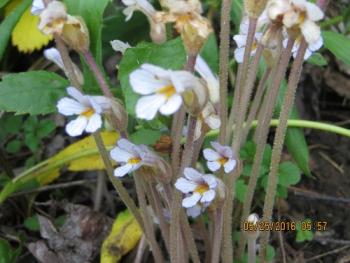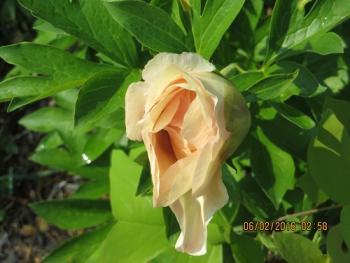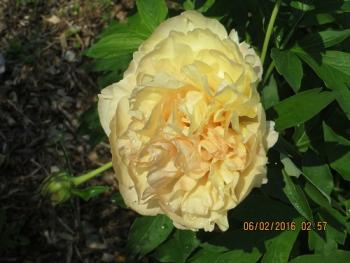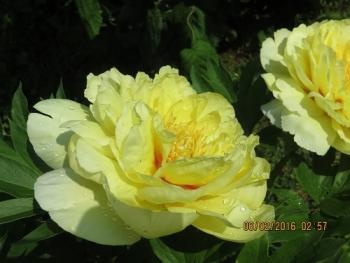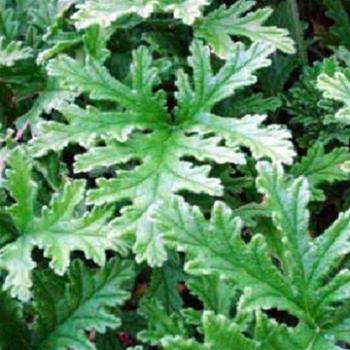-
Posts
6,193 -
Joined
-
Days Won
131
Content Type
Profiles
Forums
Events
Classifieds
Everything posted by lavender
-

Drought, disease take toll on local monarch efforts
lavender replied to Bon's topic in Go Gardening and Nature
The white ones are the dreaded cabbage butterflies that lay on the cole crops. I don't know why the drought would have singled out the monarachs. I had more butterflies than usual this year. Lots of fritillaries , a couple of types of swallowtails and skippers. Also bon's cabbage butterflies in the hundreds. There were others but it is difficult to identify them on the wing and I'm not about to catch them just to find out what they are. Didn't see any sulfurs or the little blue azures. I had several other people ask why there were so many butterflies this year but even the butterfly expert from Penn State could not answer that question. I did ask here at the butterfly program sponsored by Friends of the Library. Nature has its own processes and they are frequently a mystery to man. We aren't getting the dinosaurs back either. It is what it is. -

National Meatloaf Day, Oct.18 -- Ketchup Or No Ketchup ?
lavender replied to mr.d's topic in From Scratch
Mushrooms in a crockpot -
Actually the following link that was posted is not the same plant. It is Peniocereus greggii or Cereus greggii The video I posted is of Epiphyllum oxypetalum or Hylocereus undatus. Those common names can be tricky. They often refer to totally different things. Ours is a not uncommon house plant originating in tropical regions. The other is strictly a desert plant. Someone once gave me a cutting of a plant that grew from something they had brought out of China as a part of a corsage. They were so excited about it because of how unusual it was. So was I until I discovered it was this exact same night bloomer that I had filling an 18 inch pot and growing 3 feet tall. I didn't disillusion her. It was a gracious gift. This plant is not uncommon but being able to provide conditions under which it will bloom is tricky. The woman who sent me the video is an expert. Hers blooms quite frequently. http://www.desertusa...ing-cereus.html
-
No, they don't close when the light is shined on them. They do however close at dawn because they only bloom for the one night but it has less to do with light than it does with the length of time the flower is meant to bloom. Like daylilies bloom for just one day. What you are seeing is the person who is doing the recording stepping backward. It is making the flower look smaller. Also, one of the flowers isn't as open as it eventually will be.
-
Yes, they are an epiphytic cactus like the Christmas cactus.
-
It plays for me. I'm not sure if it can be embedded The bloom lasts one night and you can come close to guessing when it will bloom. Mine hasn't bloomed since I moved it to the greenhouse. It needs a specific dark period to initiate bloom and I think the outside lights that are motion sensitive are interrupting that period. Something else to blame on the deer. The woman who sent it watched it with her husband but I don't know if that is a blooming party or not. Some of them will bloom more than once a year but the two blooms on the same night are unusual. If I had the ambition I'd move mine to the garage at night to see if I could get it to bloom again. Try here.. It is worth looking at. https://www.facebook.com/Down-to-Earth-Garden-Club-793119380750131/?fref=ts&ref=br_tf
-
This is queen of the night or night blooming cereus (Epiphyllum oxypetalum or Hylocereus undatus). It blooms at night and the highly fragrant blossoms last only one night. It was sent to me by a member of the Down to Earth Garden Club and I don't think she would mind if I share since I already uploaded to to our facebook page. Kudos to her for getting it to bloom. Isn't it gorgeous! Video.MOV
-
It isn't a "politically correct" plant but lambs ears (Stachys byzantina) attracts bees. It was so full of them that I hated to cut it back this year. To be fair there are various factors in the decline of the honey bee population. It is not just pesticides but diseases, as well. Honey bees are not native to North America and, while they have been here since colonial times, there may be factors involved that have not yet been considered. We hear nothing of other (native) types of bees being wiped out and there are somewhere around 4,000 species of native bees in North America.
-
They should dry just like a milkweed pod and open with fluffy seeds. Get them then. The plant probably won't make it through the winter around here as it is only hardy to zone 7 but it might if the winter doesn't get too cold. You can germinate them indoors or it self sows. It is slow to germinate according to my list and it is suggested that you soak the seeds if you start it indoors.
-
How about balloon plant milkweed (Asclepia physocarpa)? Also know as "family jewels tree". https://www.anniesannuals.com/signs/a/asclepias_physocarpa.htm It wasn't in my Newcomb as it isn't native. It is beautiful. I'd love some of the seeds.
-
Too little water followed by too much water. The tomato grows faster than the skin can expand.
-
I don't know that they have a name. They are just described as a yellow pear tomato. I've grown them before and they are open pollinated so you can save the seed. I think they are an heirloom. I see you have some splitting.
-
Please contact the city Code Enforcement Officer before planting milkweed in the city limits. Someone was fined recently. Check your pm's. I've emailed you specifics. The city does not specifically forbid the growing of milkweed but if it isn't controlled it is considered a weed and they are the final arbitrators on whether how you are growing it is within their specifications.
-
There are hybrids now that don't grow as tall. They are darned hard to grow. I've tried at least twice in two different locations and they have died twice. Buying goldenrod that won't grow seems strange. I think I had that 'Lemore' one although it sticks in my mind as lemon. I'm just letting the wild one grow in areas I have designated for wild flowers and pulling them out everywhere else. I found one in a new patch I started for leftover plants that is short and doesn't look too wild. Don't know where it came from. It might have been a root mixed in with something else. I'm keeping an eye on it.
-
I've made both dandelion wine and violet cordial. In both the flavor seems to come mostly from the added ingredients. The dandelion wine was very hard to clear. Maybe goldenrod wine would be more flavorful as the flower is more aromatic. Goldenrod also makes a tea that is excellent although the variety that is said to make the best tea is difficult to come by. I've never found it locally and I've hunted down and identified a half dozen varieties including a white one that is called silverrod. Remember a weed is just any plant that is growing where you don't want it growing. Embrace it and it is no longer a weed. My yard is full of butterflies and bees this year. I've embraced a few weeds although the coneflowers, butterfly bush and bee balm are still the most popular plants. If you can get a butterfly to sit still long enough to identify it checking to see what is attracting it is always interesting.
-
The only sure way to protect bulbs is to plant them in wire cages. The mesh should be small enough to keep critters out but large enough to let the plants grow through. The culprits range from voles to skunks. Deer love the lily buds and groundhogs get the leaves. You can use the usual sprays, soap and whatever but nothing is foolproof and you must continually renew whatever you use. Switching tactics as the critters become accustomed to whatever you are using helps too. I think that things like the rotten egg stuff and ammonia just confuse the sense of smell of the sensitive noses of the animals. There are systemics that contain pepper that are supposedly drawn up into the foliage and presumably would be incorporated in the bulb. I've had one person tell me they work if you start with them very early and several people tell me they offer little if any protection. Most of my Asiatic lilies are eaten and now they are starting on the daylilies. Such is life in the woods.
-
I never really liked the big pink peonies. They always looked like over grown roses without the grace fo the rose but these newer ones are much more interesting. That white one is a stunner.
-
That is gorgeous, Tiramisu.
-
Thanks, but it is a camera for idiots. It works fine if I can hold still and don't click the shutter too soon. Sometimes the pictures are out of focus and that isn't easy to do with a camera for idiots.
-
It just might not be going to bloom until next year. Does it have buds? It should by now. They usually take a couple of years to start blooming or at least mine do.
-
This is a kind of rare one. It's a parasite that lives on the roots of various types of plants. One of its hosts is members of the sunflower family. I found three plants among my Jerusalem artichokes a few days ago. It was a nice find. The proper name is Orobanche uniflora.
-
Here it is Bon. I posted Bartzella peony last summer. I bought a big pot for an outrageous price (for me anyway) and it did bloom the first year. Later I picked up a single dried up root of Canary Brilliants from a sale table and after 2 years it has bloomed. It has a lot more pink in it than Bartzella. It is more apparent in the bud. The rain has messed up the shape but the buds are all kind of squished. The first picture is of Bartzella, the second of Canary Brilliants and the third of the bud.
-
It is supposed to repel mosquitoes. This is why it is grown. It is not a culinary herb like lemon balm or lemon verbena.
-
Looks like one of the McKenna hybrids. Don't kill it!
-



